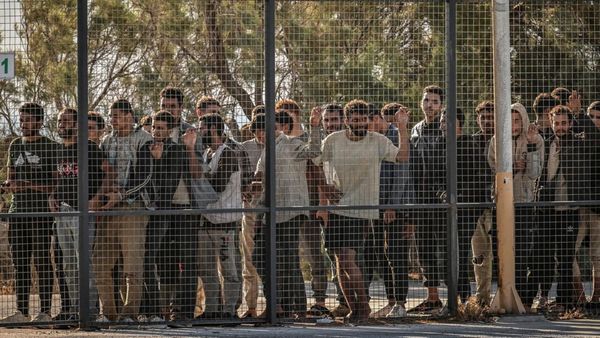
Starbucks founder Howard Schultz is stepping down as the company’s CEO—a position he has held three times—earlier than expected, it was announced on Monday.
Laxman Narasimhan, who was named incoming CEO in September, would be assuming the role effective immediately and will join the company’s board of directors, Starbucks said in a statement.
His taking over from Schultz on Monday came two weeks earlier than planned.
Schultz returned to the helm of Starbucks for the third time last April, agreeing to lead the company on an interim basis while it looked for a new chief executive. The company said last year that he was volunteering his time as interim CEO, and would receive $1 in compensation.
“Starbucks truly has been my life’s work,” Schultz—who helped Starbucks embark on its rapid expansion in the 1980s and 1990s and almost ran for president in 2020—said in a memo to staff upon his departure.
“As I turn Starbucks over to you now, know that you have my utmost confidence, trust and love. You are all the future of Starbucks.”
Fortune took a look at some of Schultz’s achievements during his third tenure as CEO of Starbucks.
Redesigned stores
Under Schultz, Starbucks unveiled plans to redesign its store offerings, with Schultz saying in July that the company would “reimagine our store experience for greater connection, ease and a planet positive impact.”
The reinvention strategy included modernizing stores, streamlining processes behind the counter and making stores more accessible.
Starbucks made more than $1 billion in investments in areas including updated training, increased pay and in-store innovation to support the plans to upgrade its stores.
Expansion
As well as continuing to open new stores, including a 6,000th location in China and a Starbucks Reserve in the Empire State Building, the company made several other big steps under Schultz’s leadership.
In October, Starbucks announced the sale of Seattle’s Best Coffee brand to Nestlé, the same month in which the firm announced a loyalty partnership with Delta Air Lines.
During Schultz’s third stint as CEO, Starbucks also ventured into the virtual world with the launch of collectible NFTs that promised customers the chance to unlock access to “new, immersive coffee experiences.”
In 2022, Starbucks’ global store count reached a record 35,711, with full-year revenues hitting a record $32.3 billion.
By the final quarter of last year, Starbucks’ loyalty scheme had almost 30 million members—a boost of 16% from a year earlier.
During his third tenure as CEO, Starbucks shares gained around 12%.
New products
During Schultz’s third turn at the helm of the coffee giant, Starbucks launched a number of new products.
At the beginning of this year, the company unveiled the pistachio cream cold brew—building on the success of its seasonal favorite the pistachio latte.
Last month, Starbucks introduced its Oleato line—an unorthodox range of olive oil-infused coffees.
The drinks initially went on sale in Italy, but will be rolled out in the U.S., Japan, the Middle East and the U.K. later this spring.
Schultz said he first tried the combination of olive oil and coffee in Sicily, and ordered the Starbucks beverage development team to start working on its own line when he returned to America.
“In both hot and cold coffee beverages, what [the combination] produced was an unexpected, velvety, buttery flavor that enhanced the coffee and lingers beautifully on the palate,” he said in a statement as the Oleato line was unveiled.
Union headache
While Schultz recorded a number of wins, his third tenure as CEO of Starbucks wasn’t without its problems.
Schultz returned to lead the company last year as it faced an unprecedented unionization drive.
More than 260 of Starbucks’ 9,000 company-run stores have voted to unionize since the end of 2021, with members seeking things like better pay and benefits, paid sick leave, and improved health care coverage.
Under Schultz’s leadership over the past 10 months, Starbucks has increasingly found itself at loggerheads with labor unions, with the coffee chain accused of retaliating against unionized workers by closing their stores or forcing them out of their jobs.
Despite negotiation efforts, more than 1,000 of the company’s American employees staged a three-day walkout at the end of last year—the second major strike at Starbucks within a month.
“I came back this past year because the company really did lose its way, and it lost its way culturally,” Schultz said in an interview with CNN in February.
"The unions showed up because Starbucks was not leading in a way that was consistent with its history in terms of being a values-based company, and I came back to basically restore those values.”
Earlier this month, Schultz agreed to testify before the Senate about Starbucks’s anti-union push.
Michelle Eisen, a Starbucks barista who has been with the company for 12 years and is now a union organizer for the company’s Elmwood store in Buffalo, NY, told Fortune in an email on Monday that unionized workers were “hopeful Laxman Narasimhan will chart a new path with the union and work with us to make Starbucks the company we know it can be.”







